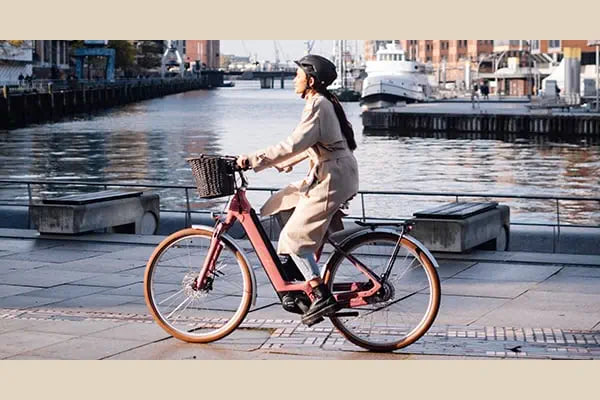
Electric Bikes vs Traditional Bikes: Which is Greener?
In a quest for sustainable transportation to drive down our carbon footprint, both electric bikes and traditional bikes are often hailed as eco-friendly alternatives to cars but which is greener? To answer this, we must examine various aspects of both types of bikes, including production, energy consumption, emissions, and overall lifecycle impact.
Production and Materials
Traditional Bikes:
- Materials: Primarily made of metals like aluminum, steel, or carbon fiber.
- Production Process: Generally straightforward, with less complexity compared to e-bikes.
- Environmental Impact: Lower, as they don’t require batteries or complex electronics.
Electric Bikes:
- Materials: Similar to traditional bikes but include additional components like batteries, motors, and electronic control systems.
- Production Process: More complex, involving the manufacturing of batteries and motors, which are natural resource-intensive.
- Environmental Impact: Higher due to the mining of materials for batteries (like lithium) and the energy-intensive production process of electronic components.

Energy Consumption
Traditional Bikes:
- Energy Source: Human power.
- Operational Energy Consumption: None, aside from the food energy consumed by the rider.
- Efficiency: Extremely high, as they require no external energy sources.
Electric Bikes:
- Energy Source: Electricity, typically charged via the grid.
- Operational Energy Consumption: Requires electricity to charge the battery, which depends on the local energy mix (renewable vs. fossil fuels).
- Efficiency: More efficient than cars and public transport but less efficient than traditional bikes.
Further Reading
- Why buy an Electric Bike?
- The Top 4 eCargo Bike myths about delivery you need to know
- Electric Bikes: Bridging the generation gap
Emissions
Traditional Bikes:
- Direct Emissions: None, as they are powered by human effort.
- Indirect Emissions: Minimal, primarily related to the mass-production and transportation of the bike.
Electric Bikes:
- Direct Emissions: None during operation.
- Indirect Emissions: Higher due to the electricity used for charging (dependent on the energy mix) and the production and disposal of batteries.
Lifecycle Analysis
Traditional Bikes:
- Longevity: Typically last many years with proper maintenance.
- End-of-Life: Easier to recycle due to the simpler materials and lack of electronic components.
- Overall Impact: Low, given their simplicity and long lifespan.
Electric Bikes:
- Longevity: Batteries may need replacement every few years, although the bike itself can last as long as a traditional bike.
- End-of-Life: More challenging to recycle due to electronic components and batteries, which can be hazardous if not disposed of properly.
- Overall Impact: Higher due to the environmental costs of battery production and disposal.
Practical Considerations
Traditional Bikes:
- Usage: Best for shorter commutes and recreational use.
- Accessibility: Limited to those with sufficient physical ability and fitness.
- Adoption Rate: Lower in areas with hilly terrain or long-distance commutes.
Electric Bikes:
- Usage: Suitable for longer commutes and more challenging terrains due to motor assistance.
- Accessibility: More inclusive, allowing people of varying fitness levels to cycle.
- Adoption Rate: Higher in urban areas where they can replace car commutes, leading to significant reductions in traffic congestion and emissions.
Conclusion
When comparing the environmental impact of electric bikes and traditional bikes, traditional bikes emerge as the greener option in terms of production, energy consumption, and emissions. They are simpler, require no external energy sources, and have a lower overall lifecycle impact. However, e-bikes offer significant benefits, particularly in making cycling more accessible and feasible for longer distances and varied terrains.
The ‘greenness’ of e-bikes largely depends on the energy mix of the electricity used for charging and advancements in battery technology and recycling processes. In regions with a high proportion of renewable energy, e-bikes can be a highly sustainable option, especially if they replace car journeys.
Ultimately, both e-bikes and traditional bikes play crucial roles in promoting sustainable transportation. Encouraging the use of either can lead to reduced reliance on cars, lower greenhouse gas emissions, and healthier, more active lifestyles. The choice between the two should consider personal needs, local conditions, and the broader environmental context.
